Copyright 2012 by Giulio Tononi
All rights reserved. Published in the United States by Pantheon Books, a division of Random House, Inc., New York, and in Canada by Random House of Canada Limited, Toronto.
Pantheon Books and colophon are registered trademarks of Random House, Inc.
Grateful acknowledgment is made to Alfred A. Knopf for permission to reprint b o d y copyright 1995 by James Merrill, from A Scattering of Salts by James Merrill. Used by permission of Alfred A. Knopf, a division of Random House, Inc.
LIBRARY OF CONGRESS CATALOGING-IN-PUBLICATION DATA Tononi, Giulio. Phi : a voyage from the brain to the soul/Giulio Tononi. p. cm. eISBN: 978-0-307-90722-6 1. ConsciousnessPhysiological aspects.2. Brain physiology.3. Mind and body.I. Title. QP411.T66 2012 612.8dc23 2011041620
www.pantheonbooks.com
Cover design by Giulio Tononi
v3.1
CONTENTS
1
T HE D REAM OF G ALILEO
PART I
EVIDENCE: Experiments of Nature
2
I NTRODUCTION
Displacements
3
C EREBRUM
In which is shown that the corticothalamic system generates consciousness
4
C EREBELLUM
In which is shown that the cerebellum, while having more neurons than the cerebrum, does not generate consciousness
5
T WO B LIND P AINTERS
In which is shown that sensory inputs and pathways are not necessary for consciousness
6
A B RAIN L OCKED I N
In which is shown that motor outputs and pathways are not necessary for consciousness, nor are they sufficient
7
E MPRESS W ITHOUT M EMORY
In which is shown that many brain circuits that help us see, hear, remember, speak, and act are not necessary for consciousness
8
A B RAIN S PLIT
In which is shown that consciousness is divided if the brain is split
9
A B RAIN C ONFLICTED
In which is said that consciousness can split if different regions of the brain refuse to talk to each other
10
A B RAIN P OSSESSED
In which is shown that when cortical neurons fire strongly and synchronously, as during certain seizures, consciousness fades
11
A B RAIN A SLEEP
In which is shown that when cortical neurons can be on and off only together, as during dreamless sleep, consciousness fades
PART II
THEORY: Experiments of Thought
12
I NTRODUCTION
The Enigma of Consciousness
13
G ALILEO AND THE P HOTODIODE
In which is shown that the humble photodiode can tell light from dark as well as Galileo
14
I NFORMATION: T HE M ANIFOLD R EPERTOIRE
In which is shown that the repertoire of possible experiences is as large as one can imagine
15
G ALILEO AND THE C AMERA
In which is shown that the sensor of a digital camera has a large repertoire of possible states, perhaps larger than Galileos
16
I NTEGRATED I NFORMATION: T HE M ANY AND THE O NE
In which is shown that consciousness lives where information is integrated by a single entity above and beyond its parts
17
G ALILEO AND THE B AT
In which is feared that the quality of experience cannot be derived from matter
18
S EEING D ARK (D ECONSTRUCTING D ARKNESS )
In which is said that darkness does not exist in a void but requires a context
19
T HE M EANING OF D ARK (C ONSTRUCTING D ARKNESS )
In which is shown that darkness is built of many nested mechanisms that specify what it is not
20
T HE P ALACE OF L IGHT
In which is shown that an experience is a shape made of integrated information
21
T HE G ARDEN OF Q UALIA
In which is said that the universe is mostly dark, but the largest stars are closer than one thinks, if they are looked at with the proper instrument
PART III
IMPLICATIONS: A Universe of Consciousness
22
I NTRODUCTION
Sparks and Flames
23
N IGHTFALL I: D EATH
In which is said that, if consciousness is integrated information, it dissolves with death
24
N IGHTFALL II: D EMENTIA
In which is said that consciousness disintegrates with dementia
25
N IGHTFALL III: D OLOR
In which is said that, if the quality of consciousness is a shape made of integrated information, it can be turned into the only real and eternal Hell
26
T WILIGHT I: C ONSCIOUSNESS D IMINISHED
In which is said that consciousness can be present in the absence of language and reflection
27
T WILIGHT II: C ONSCIOUSNESS E VOLVING
In which is said that animals are conscious, too
28
T WILIGHT III: C ONSCIOUSNESS D EVELOPING
In which is said that consciousness must be present, to some degree, even before birth
29
D AYLIGHT I: C ONSCIOUSNESS E XPLORING
In which is said that, by investigating nature, new qualia are discovered
30
D AYLIGHT II: C ONSCIOUSNESS I MAGINING
In which is said that art and imagination invent new shapes within the mind
31
D AYLIGHT III: C ONSCIOUSNESS G ROWING
In which is said that, by growing consciousness, the universe comes more into being, the synthesis of one and many
32
E PILOGUE
Three Late Dreams
33
A FTERTHOUGHTS
Study Questions
PREFACE
Every night, when we fall into dreamless sleep, consciousness fades. With it fades everyones private universepeople and objects, colors and sounds, pleasures and pains, thoughts and feelings, even our own selves dissolveuntil we awake, or until we dream.
What is consciousness, and what does it mean? How is it related to the world around us? What is it made of, and how is it generated inside the brain? Can science shed some light on it? Perhaps, but consciousness cannot just rest inside the shroud of science. Because consciousness is more than an object of science: it is its subject too.
What follows is a story where an old scientist, Galileo, goes through a journey in search of consciousness. In his time, Galileo removed the observer from nature and opened the way for the objectivity of science. Perhaps this is why Galileo is engaged to return the observer to nature, to make subjectivity a part of science. Or perhaps because Galileo was a master of thought experiments, of which this book makes much use.
During his journey, Galileo meets people from his and other times, learns many lessons, thinks many thoughts, and sometimes wonders, too, whether he is awake or dreaming. But each chapter makes some kind of statement, building on the previous ones, and Galileos understanding grows. So in the first part of the book, he learns the facts of consciousness and the brainwhy certain parts of the brain are important but not others, or why consciousness fades with sleep. In the second part, he sees how these facts can be unified and understood through a scientific theory of consciousnessa theory that links consciousness to  , the symbol of integrated information that gives the book its title. And finally, in the third part of the book, he realizes some of the theorys implications, and sees that they concern us all, because consciousness is everything we have, and everything we are. Each experience, Galileo realizes, is a unique shape made of integrated informationa shape that is maximally irreduciblethe shape of understanding. And it is the only shape thats
, the symbol of integrated information that gives the book its title. And finally, in the third part of the book, he realizes some of the theorys implications, and sees that they concern us all, because consciousness is everything we have, and everything we are. Each experience, Galileo realizes, is a unique shape made of integrated informationa shape that is maximally irreduciblethe shape of understanding. And it is the only shape thats


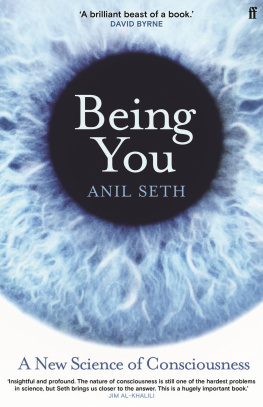
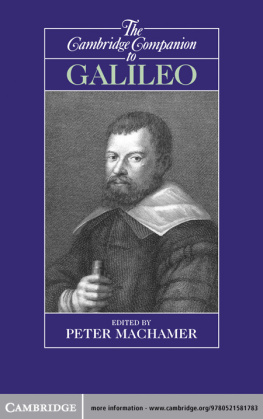
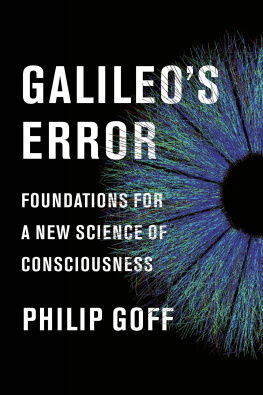
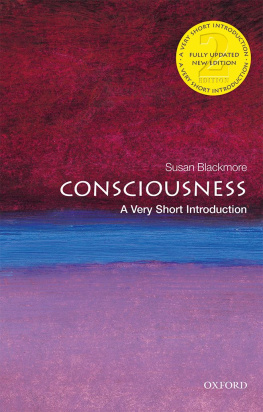
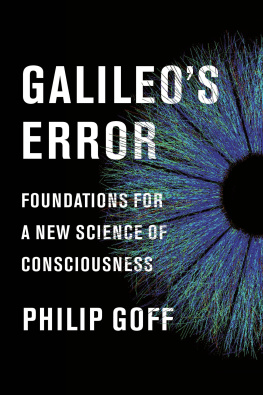
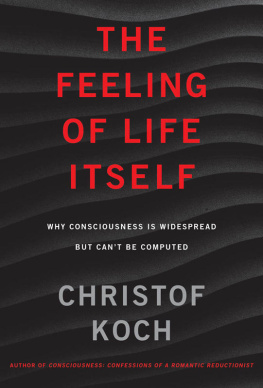
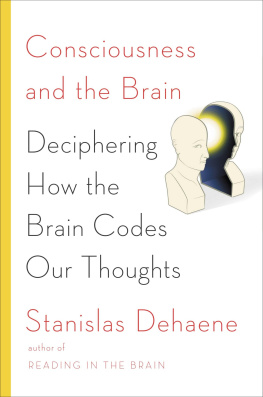
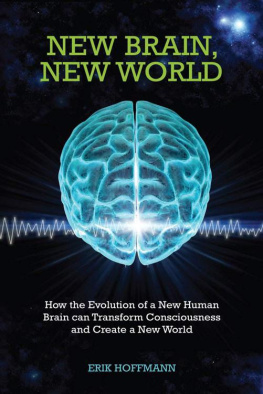
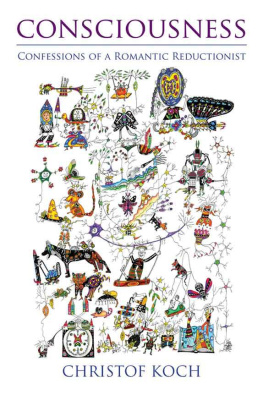

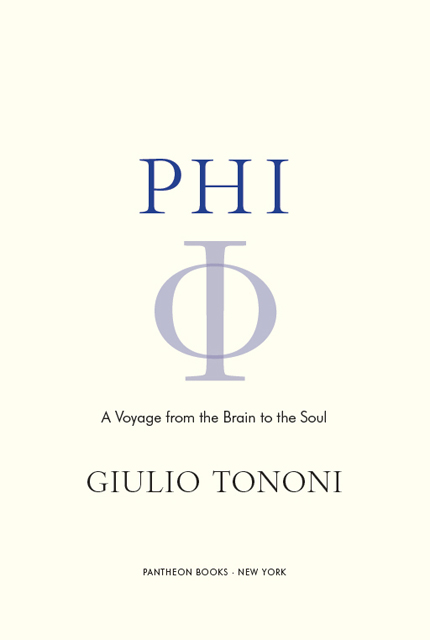
 , the symbol of integrated information that gives the book its title. And finally, in the third part of the book, he realizes some of the theorys implications, and sees that they concern us all, because consciousness is everything we have, and everything we are. Each experience, Galileo realizes, is a unique shape made of integrated informationa shape that is maximally irreduciblethe shape of understanding. And it is the only shape thats
, the symbol of integrated information that gives the book its title. And finally, in the third part of the book, he realizes some of the theorys implications, and sees that they concern us all, because consciousness is everything we have, and everything we are. Each experience, Galileo realizes, is a unique shape made of integrated informationa shape that is maximally irreduciblethe shape of understanding. And it is the only shape thats